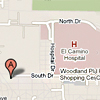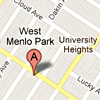Femtosecond Laser Cataract Surgery
FAQ’s for Femtosecond Laser
WHAT IS THE FEMTOSECOND LASER?
The femtosecond laser is a medical device that can be used for many purposes; it was recently approved by the Food and Drug Administration to perform some of the steps of surgery to remove a cataract or cloudy lens (approved use). It is also being used to perform some of the steps of surgery to remove a clear lens or refractive lens exchange (RLE), and to make arcuate incisions in the cornea (AK) to reduce astigmatism (off-label uses). There are benefits and risks associated with the use of the laser, and there may be additional costs. This section of the consent document will provide information to help you decide if you would like your eye surgeon (ophthalmologist) to use the laser to perform parts of the cataract/refractive lens surgery or to reduce astigmatism.
HOW DOES SURGERY WITH THE LASER DIFFER FROM TRADITIONAL SURGERY TO REMOVE THE LENS? WHAT ARE THE BENEFITS AND COST?
Traditionally, the eye surgeon uses blades to create the incisions in the cornea (the front window of the eye), and other special instruments to create the capsulotomy (the circular incision in the outer layer of the cataract or clear lens). The surgeon also uses a phacoemulsification device that utilizes ultrasound power to break up the lens and remove it from the eye. The femtosecond laser can be used to perform some or all of these steps. The possible benefits of the laser include the ability to make more precise and consistent incisions in the cornea, a more circular and centered capsulotomy, and to pre-soften the cataract so less ultrasound energy is necessary with the phacoemulsification device.
If Medicare insurance is paying for your cataract surgery, the steps are included in the fee, whether created by hand-held instruments or the laser. There is no clear policy on these issues from other health insurers. Refractive lens exchange (RLE) is not covered by Medicare or other insurance companies, so the fee for a femtosecond laser-assisted operation may be greater.
HOW IS THE LASER USED TO TREAT ASTIGMATISM?
Patients with astigmatism have several choices for the reduction of astigmatism. Nonsurgical options for astigmatism correction include glasses and contact lenses. Surgical correction of astigmatism can be achieved through a toric intraocular lens, a limbal relaxing incision (LRI) made manually with a blade, or an arcuate incision made with the femtosecond laser (AK). Refractive surgery such as LASIK or PRK can also treat astigmatism. The shape and size of incisions made with the laser may be more precise. Medicare does not pay for the surgical correction of astigmatism. If you choose a toric IOL, you will be responsible for the difference between the cost of a standard monofocal IOL and a toric IOL. If you choose LRI, AK, or refractive surgery, you will be responsible for paying the fees associated with it.
WHAT ARE THE COMPLICATIONS ASSOCIATED WITH THE FEMTOSECOND LASER?
Use of the laser could increase the time needed to perform the surgery, and you may need to have the procedure performed in two different locations or two different rooms at the surgery center. It could also lead to complications, which include but are not limited to: decentration of the corneal or capsulotomy incisions; incomplete or interrupted capsulotomy, fragmentation, or corneal incision procedure; anterior capsular tear; posterior capsular tear with lens/lens fragment dislocation into the vitreous; corneal abrasion or defect; pain; infection; bleeding; damage to intraocular structures; anterior chamber fluid leakage; anterior chamber collapse; and elevated eye pressure.
In the case of an interrupted or incomplete corneal incision, the laser can be recentered and the incisions repeated at a different location, or the incisions can be completed using hand-held blades. In the case of an incomplete or interrupted capsulotomy, the procedure may be immediately repeated with a slightly larger diameter to complete the capsulotomy or the surgeon may elect to complete the procedure using traditional manual capsulotomy methods. In the case of an incomplete or interrupted fragmentation, the procedure can be repeated after recentration or the surgeon may elect to complete fragmentation using conventional phacoemulsification treatment. In the case of loss of lens fragments into the vitreous, a separate procedure called a vitrectomy may be necessary to remove the vitreous and lens fragments.

 Mountain View Office
Mountain View Office Menlo Park Office
Menlo Park Office